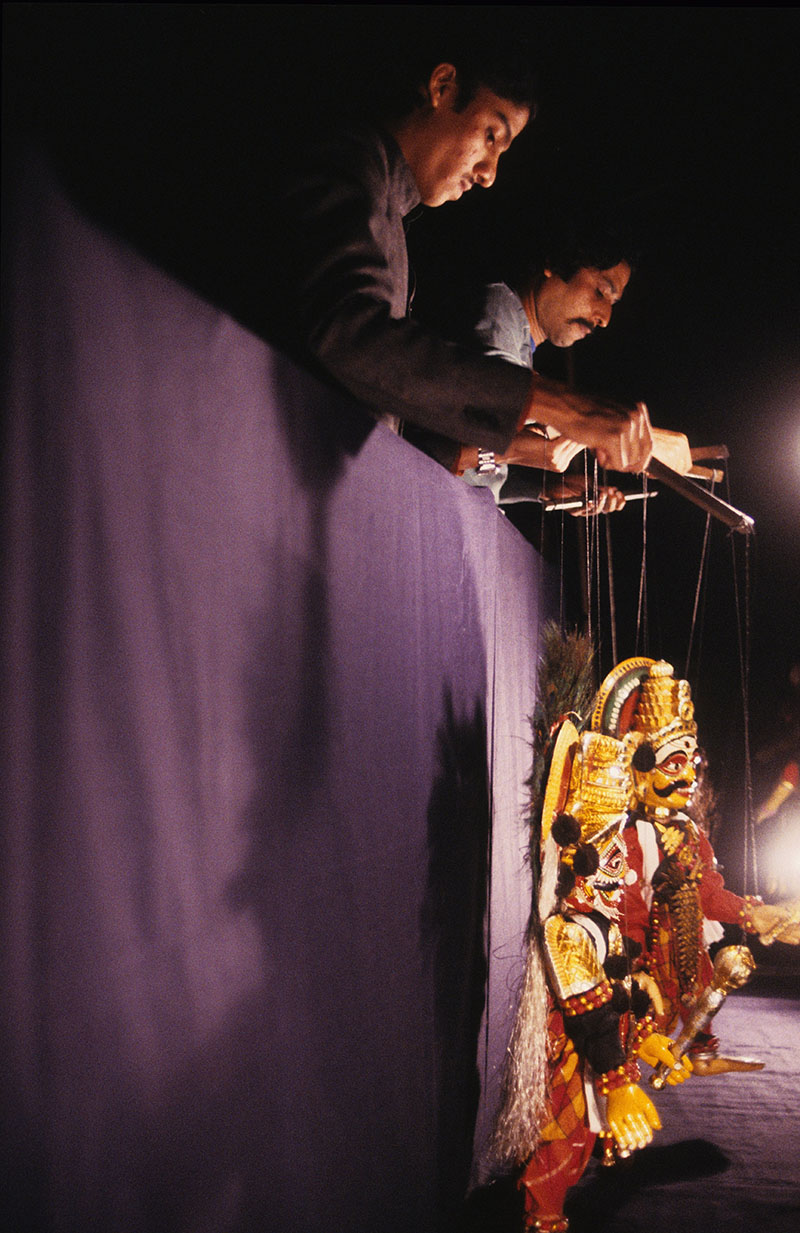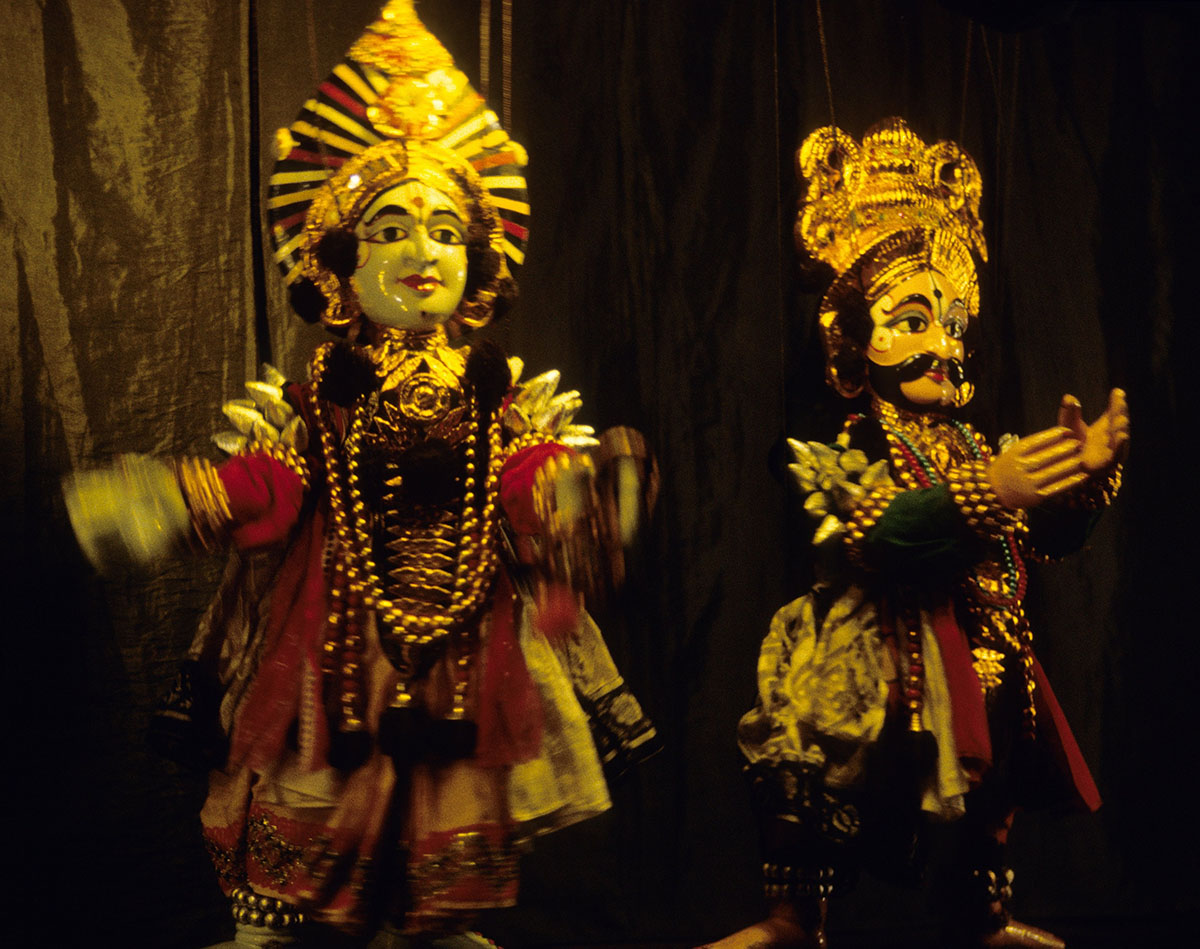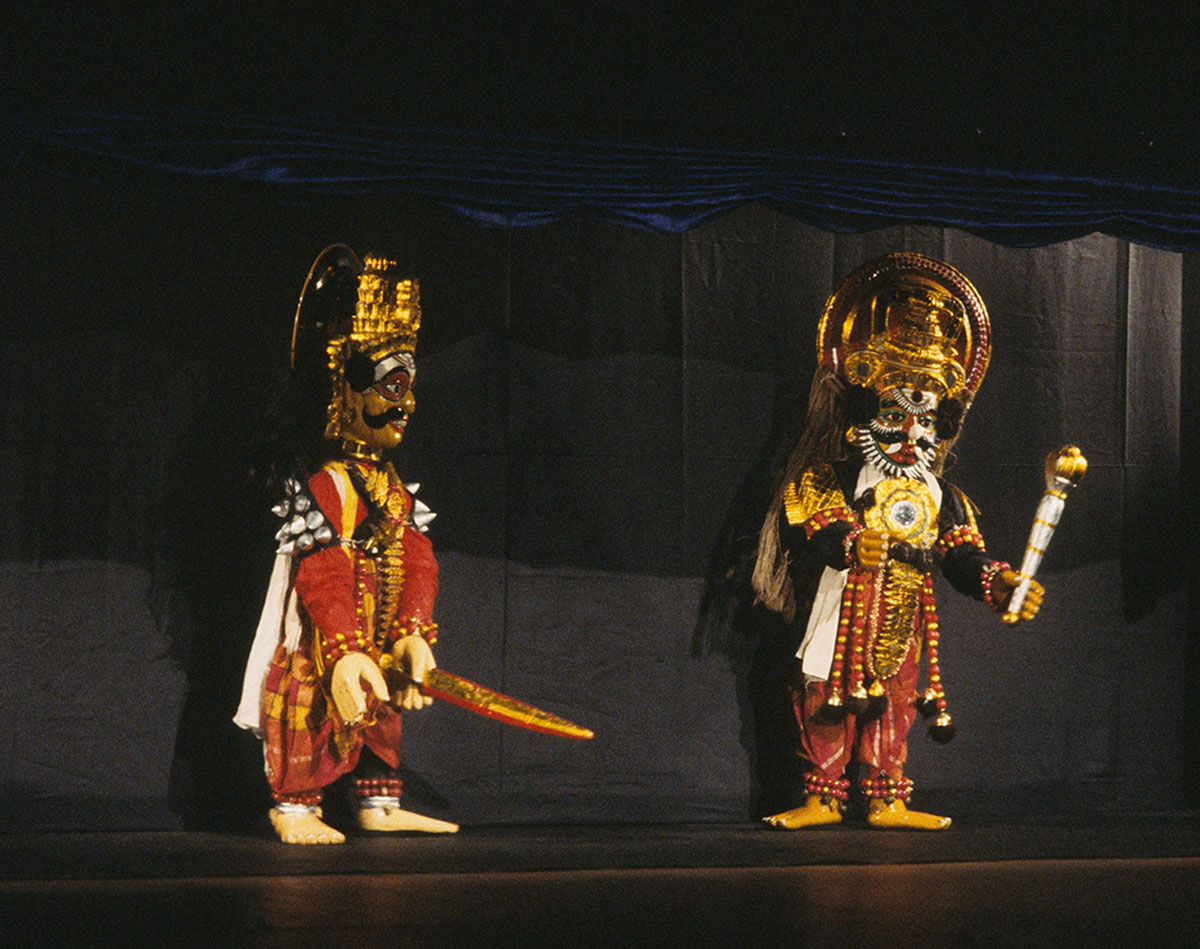ARTICLE
Yakshagana Gombeyaata
The stage of a yakshagana gombeyaata performance is made on a raised platform, 12 ft by 8 ft in size. The side facing the audience has a wooden frame with an opening of 8.5 ft by 3.5 ft, behind which the stage and backdrop are set up. Traditionally, oil lamps were used to light the performance, but these have now been replaced by electric lights.
The repertory of yakshagana gombeyaata performances features episodes from the Ramayana and Mahabharata as well as the Puranas. As the lead musician and singer, the bhagavatar’s role is similar to that of a conductor and includes singing the cantos, improvising dialogues with the puppeteers who voice the puppets, and controlling the tempo of the performance. Apart from their training in the manipulation of puppets, puppeteers are required to have a knowledge of the epics as well as the distinct musical framework of yakshagana theatre. The musical instruments used in the performance are maddale (a horizontal percussion drum), pungi (a reed pipe used as a drone), a harmonium and chende (a vertical percussion drum). Gejje or anklet bells are often attached to the puppets and may also be worn by puppeteers to emphasise the aural effects of a puppet’s dance.
Yakshagana gombeyaata begins with the bhagavatar, musicians and puppeteers offering a prayer, which is followed by the entrance of puppets depicting various deities such as Ganesh and Saraswati. It is only after this that the performance itself commences. While a yakshagana play lasts from dusk to dawn, yakshagana gombeyaata is condensed to a runtime of three hours. A traditional performance used to require more than 10 individuals, but performances today – with the songs, music and dialogues often being pre-recorded – involve fewer individuals. The language of these performances may be Kannada, Tulu or Malayalam.
Yakshagana gombeyaata suffered a decline in the early decades of the twentieth century. In the 1950s, it was revived with the assistance of Kamaladevi Chattopadhyay and the All India Handicrafts Board, who supported the efforts of Devanna Padmanabha Kamat, one of the few puppeteers still practising the form. Devanna, alongwith his son Kogga, re-established the family troupe, Shri Ganesha Yakshagana Gombeyaata Mandali, in Uppinakudru, near Kundapura. He went on to win the President’s Award in 1966 for his work. Today, his grandchildren operate the Yakshagana gombeyaata Academy, also in Uppinakudru, which offers puppetry workshops and stages monthly performances. In Kerala, a similar effort to revive a family troupe was led by KV Ramesh, who established the Shri Gopalakrishna Yakshagana Bombeyata Sangha in 1981, after having learnt the puppetry from his father. Both troupes have performed at several national and international events.
Bibliography
Our website is currently undergoing maintenance and re-design, due to which we have had to take down some of our bibliographies. While these will be re-published shortly, you can request references for specific articles by writing to hellomapacademy@map-india.org.









